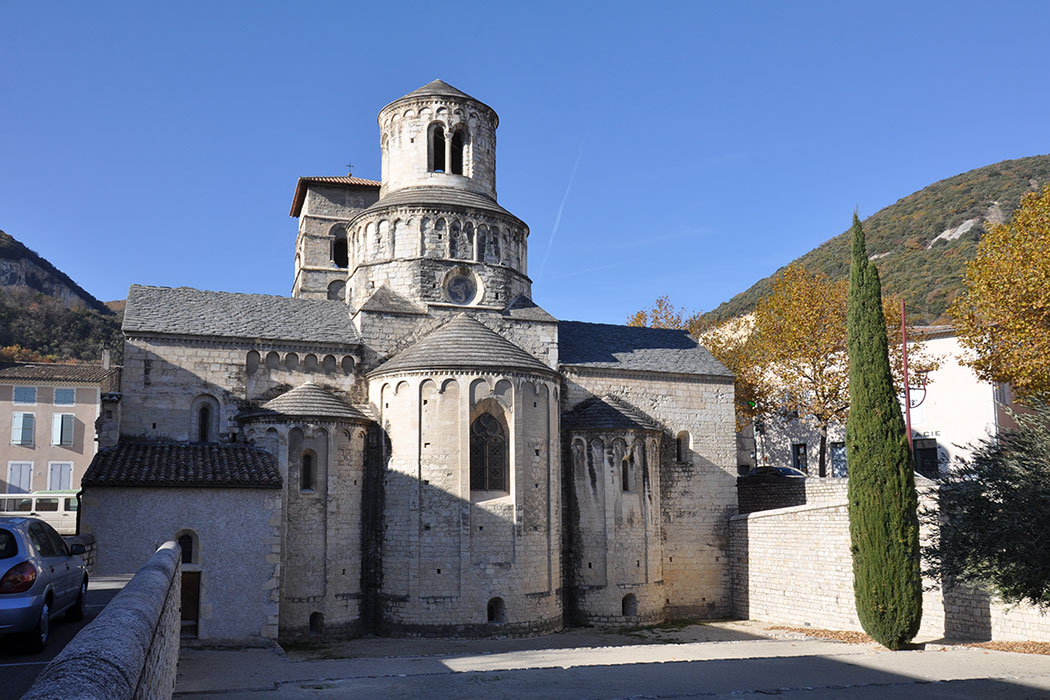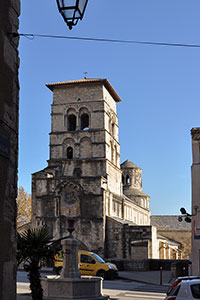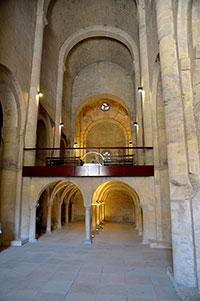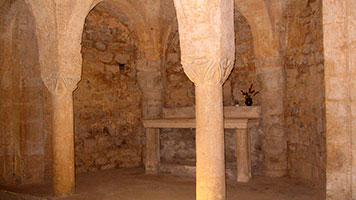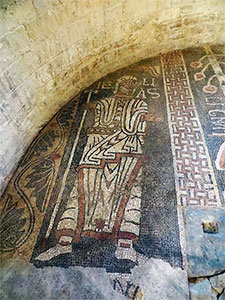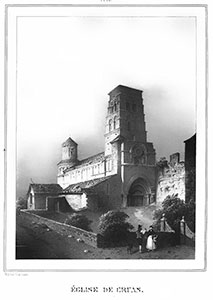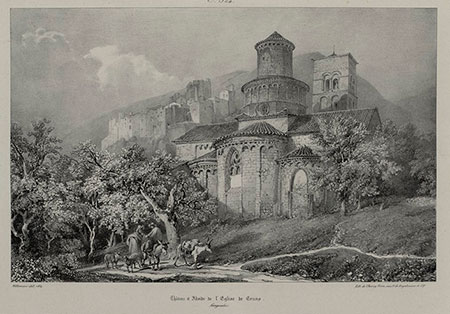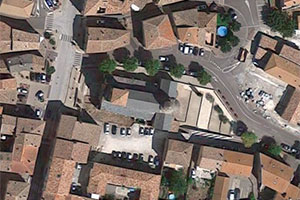The monastery of Cruas was probably founded, or perhaps refounded, around the year 804, on a site previously occupied by earlier churches. This operation was carried out thanks to the intervention of Eribert, a local lord. In 817, Elpodorius, Count of Vivarais and son of the founder, obtained royal protection for the monastery from Louis the Pious (778–840); at that time, its abbot, Bonaldus, is also mentioned. This privilege — together with others — was confirmed on several occasions by different rulers in the years that followed.
The Abbey of Saint-Sauveur d’Aniane (Hérault) took part in the development of Cruas, at a time when that house was the centre of the Benedictine reform promoted by Benedict of Aniane. In 1095, Pope Urban II consecrated the church and, in the years that followed, the monastery enjoyed a long period of prosperity, during which it came to have around forty dependent priories. The effects of the Hundred Years’ War and the adoption of the commendatory system in 1467 weakened the community, which also suffered severe damage during the Wars of Religion.
In 1574, Cruas was occupied by Protestant forces and the site remained abandoned for several years (1580–1628), while the monks took refuge in a nearby fortification they had built as a place of protection. In the first half of the eighteenth century the monastery was in full decline. In 1741, the bishop of Viviers suppressed the abbey, although the office of commendatory abbot was maintained, but without a community. The Revolution brought a definitive end to the monastery, which was sold in 1794. At that time most of its documentation was lost, and the buildings were in ruins.
In the mid-nineteenth century restoration work on the church began. It is a Romanesque building largely constructed between the eleventh and twelfth centuries. It has three naves of five bays and a transept opening onto three semicircular apses. The first bay of the nave, to the west, incorporates a chapel on the upper level. The building also contains a gallery occupying the last two bays of the nave and the transept, with an upper church and a lower church that communicates with a crypt.
- COTTINEAU, Laurent-Henri (1936). Répertoire topo-bibliographique des abbayes et prieurés. Vol. 1. Mâcon: Protat
- DEVIC, Claude; i altres (1872). Histoire générale de Languedoc. Vol. 4. Tolosa de Ll.: Privat
- DU BOYS, Albert (1842). Album du Vivarais, ou Itinéraire historique et descriptif de cette ancienne province. Grenoble: Prudhomme
- RAYMONDON, M. (1858). Coup-d'oeil rétrospectif sur les monuments historiques du département de l'Ardèche. Congrés Archéologique de France. París: Derache
- ROUCHIER, Jacques (1914). Histoire du Vivarais. Vol. 1. Largentière
- SAINT-JEAN, Robert (1991). Vivarais Gévaudan romans. La Pierre-qui-Vire: Zodiaque
- SAINT-MAUR, Congregació de (1865). Gallia Christiana in provincias ecclesiasticas distributa. Vol. 16. París: Firmin Didot
- SILVIUS (1902). Un aperçu de l'histoire de Cruas. Revue historique, archéologique, littéraire et pittoresque du Vivarais. Privas: I. Centrale
- TARDIEU, Joëlle (1984). Reprise des fouilles en l'abbatiale de Cruas. Archéologie du Midi médiéval
- TARDIEU, Joëlle (1995). L’abbatiale Sainte-Marie de Cruas. Congrès archéologique de France, 150 ss. Moyenne vallée du Rhône. Société française d'archéologie
- TARDIEU, Joëlle; i altres (1985). Cruas, une abbaye bénédictine en Vivarais. Lavilledieu: Candide
